Get Dirty to Get Joy- Bacteria in Soil Acts as Antidepressant
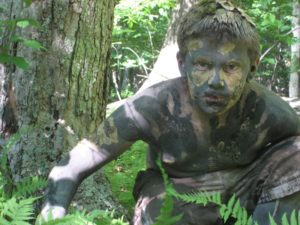 A bacteria found in soil called Mycobacterium has been found to effect the same neurons as Prozac, offering people a natural lift in mood. This is just one more great reason to get out in the garden and grow your own foods. Not a green thumb? Just spending time in areas with rich soil will allow you to breath in these great benefits. – Intelligentactile
A bacteria found in soil called Mycobacterium has been found to effect the same neurons as Prozac, offering people a natural lift in mood. This is just one more great reason to get out in the garden and grow your own foods. Not a green thumb? Just spending time in areas with rich soil will allow you to breath in these great benefits. – Intelligentactile
Imagine: You’re feeling so depressed that you visit your doctor and request a prescription for a mood elevator. Instead of writing you a prescription for Prozac or a similar antidepressant, she advises you to get dirty. While you consider changing doctors, she describes how getting dirty changes your brain chemistry. The microbes in dirt, she says, tweak the same neurons that are stimulated by Prozac. Your options, she explains, are an expensive drug plus its possible side effects, or gardening, yard work, or a romp in the park. Your doctor, it turns out, hasn’t gone round the bend. She is actually up-to-date on the latest scientific findings about how the natural environment affects our brain function.
The dirt-and-Prozac connection surfaced a couple of years ago from Dr. Chris Lowry and his colleagues at the University of Bristol and University College London. They exposed lung cancer patients to a common, inoffensive microbe called Mycobacterium vaccae, found in soil. The patients unexpectedly reported increases in their quality of life, including a brighter mood. The researchers wondered if this effect was caused by stimulation of neurons in the patients’ brains that produce serotonin, a feel-good chemical.
Taking the next step, they broke up M. vaccae into fragments with sound waves and injected them into the windpipes of anesthetized mice. When compared to controls, the mice exposed to M. vaccae had more activity in serotonin-producing neurons and higher levels of serotonin in several areas of the brain. “[The bacteria] had the exact same effect as antidepressant drugs,” Dr. Lowry said. The scientists said that one might derive dirt’s benefit directly by rooting around in a vegetable garden, or by eating lettuce or carrots picked from that garden. Popular media ran with the findings. ”Is Dirt the New Prozac?” asked Discover magazine.
The dirt-and-Prozac connection fits with a recent idea in medicine called the “hygiene hypothesis.” According to this concept, exposure early in life to the bacteria, fungi, and viruses found in common, everyday dirt is necessary to stimulate our immune system. When children are exposed to the stew of microbes in dirt, their immune systems become stronger. The immune system also learns to ignore substances like pollen or the dandruff of pets, which can trigger asthma and allergies. Researchers have shown, for example, that kids who grow up in dirty environments such as farms have a lower incidence of infections, asthma, allergies, and eczema later in life, compared to kids raised in urban environments in which parents try to keep them squeaky clean.
For a century and a half we have waged merciless war on filth through public health measures such as public sanitation systems and water purification programs. These developments have been enormously successful. The increase in lifespan in modern societies is due largely to the reduction of death rates from diseases such as typhoid and cholera, which in nineteenth-century America were called “filth diseases.”
We have to wonder, however, if we have gone too far in our obsession with hygiene. Throughout our evolutionary history our ancestors lived in intimate contact with dirt, and its influence, we now see, was not all bad. We evolved in the outdoors, and we are beginning to glimpse the price we are paying for shutting ourselves off from nature.
Don’t worry. Nobody is suggesting that we never bathe or clean our bathrooms. Neither is it necessary to inject M. vaccae into our windpipe. If we merely go for a walk in the woods, grub around in our vegetable garden, or weed our flowerbeds, we get a dose of the good bugs simply by inhaling.
“Nature deficiency disorder” has been proposed as a term for the problems we create when we build a wall between the natural world and ourselves. I am highly susceptible to this malady. When I spend too much time indoors, I become increasingly moody and morose. There’s only one cure: take a hike, go camping, or root around in my veggie garden. These activities are more than a hobby; they have become an essential part of my life and an important element in my personal health plan.
What about kids? Not so long ago, play and getting dirty were pretty much the same thing — frolicking in a sand box, making mud pies, romping in parks. Now many parents are horrified by dirty play. Keeping kids spotless and unsoiled, however, may be setting them up for trouble later on, because without exposure to nature’s medley of microbes our kids can grow up with confused, weak immune systems. Can we rethink the prohibition on dirty play for the sake of our children’s health?
Antidepressant medication can sometimes be a treatment of choice. It can work wonders, and in some instances can be life-saving. But if your doctor advises you to get dirty instead of taking a pill to perk up your mood, don’t look at her strangely. Pride yourself on having a physician who is on the cutting edge.
Think of it this way: Have you ever seen an unhappy earthworm?
By – H. L. Mencken
Source:
http://www.huffingtonpost.com/dr-larry-dossey/is-dirt-the-new-prozac_b_256625.http
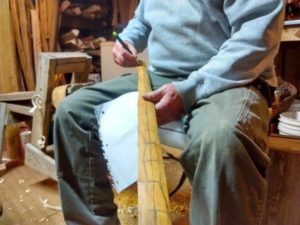 The bow making is underway. We are running at maximum capacity in both the Spirit of the Hunt Apprenticeship and the upcoming Self Bow Making workshop.
The bow making is underway. We are running at maximum capacity in both the Spirit of the Hunt Apprenticeship and the upcoming Self Bow Making workshop.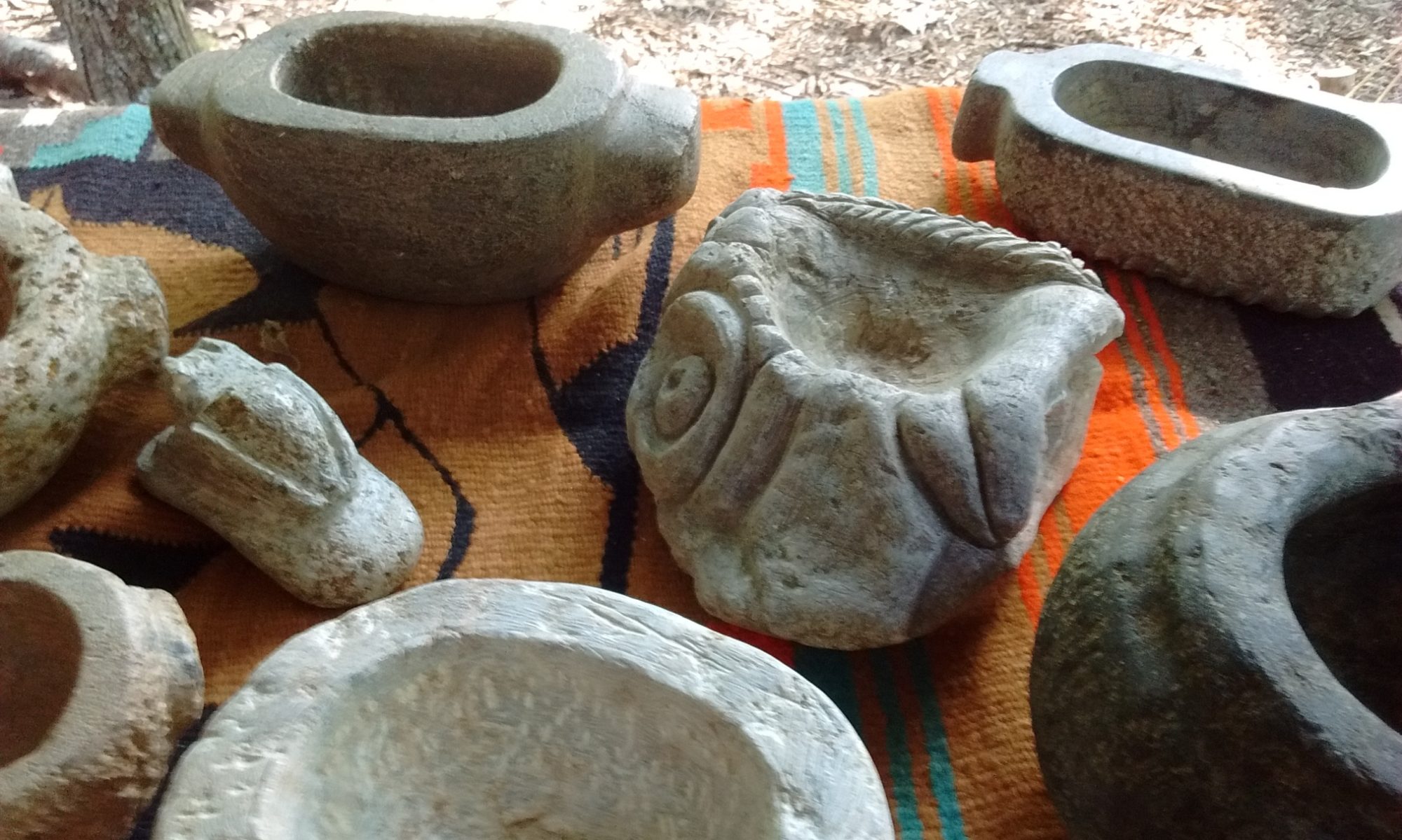

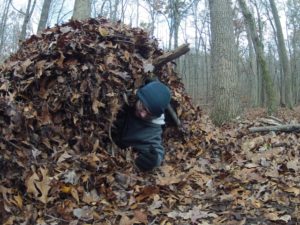
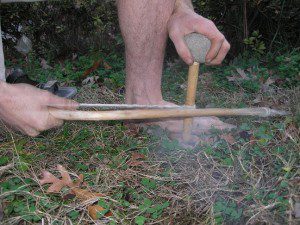
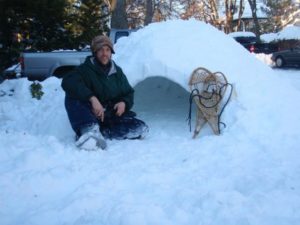
 A bacteria found in soil called Mycobacterium has been found to effect the same neurons as Prozac, offering people a natural lift in mood. This is just one more great reason to get out in the garden and grow your own foods. Not a green thumb? Just spending time in areas with rich soil will allow you to breath in these great benefits. – Intelligentactile
A bacteria found in soil called Mycobacterium has been found to effect the same neurons as Prozac, offering people a natural lift in mood. This is just one more great reason to get out in the garden and grow your own foods. Not a green thumb? Just spending time in areas with rich soil will allow you to breath in these great benefits. – Intelligentactile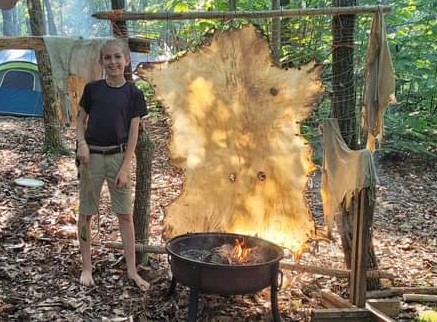
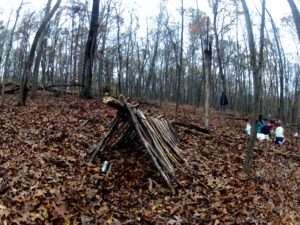 Volumes could be written about different styles of shelter, materials, etc. One of the most basic and frequently taught methods is a simple debris hut, which is essentially a framework of branches that can be covered and filled with layers of debris that shingle (on the outside) and insulate (on the inside). There are dozens of ways to tweak and customize this type of shelter, and it’s the type of shelter we teach most often. So for kids, what are some of the benefits to learning how to build shelter?
Volumes could be written about different styles of shelter, materials, etc. One of the most basic and frequently taught methods is a simple debris hut, which is essentially a framework of branches that can be covered and filled with layers of debris that shingle (on the outside) and insulate (on the inside). There are dozens of ways to tweak and customize this type of shelter, and it’s the type of shelter we teach most often. So for kids, what are some of the benefits to learning how to build shelter?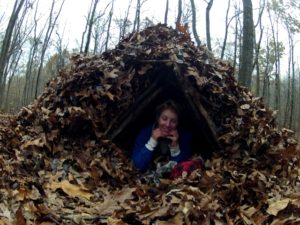 For one thing, it’s a skill that allows a wide range of ages and skill levels to tap into their powers of creativity and imagination. There’s a reason almost all kids love to build forts, and they’re all the better for doing it outside in the fresh air and sunshine instead of indoors where their poor little developing brains are bathing in the ambient noise of television commercials and the harmful compounds off-gassing from paints, carpet, and couch cushions. Building a shelter requires cognitive skills like visualizing, executing plans, problem-solving, and overcoming setbacks. Debris huts are relatively free-form, too. The sky is the limit in terms of finding new ways to fit the pieces together, find new ways to utilize the materials you actually have at hand in different situations, or add features like a lowered entryway that will keep your warm body heat trapped in the inner chamber, a fence of sticks at the base of your walls to trap slumping layers of leaves, or a lean-to/heat shield outside to protect a fire if you have one. The building blocks for shelter are accessible to almost everyone, with little skill or modification necessary. Sticks, leaves, and bark are laying everywhere at your feet, just waiting for kids to imagine and create things out of them, and shelter really helps people of all ages re-establish a creative connection to their environment.
For one thing, it’s a skill that allows a wide range of ages and skill levels to tap into their powers of creativity and imagination. There’s a reason almost all kids love to build forts, and they’re all the better for doing it outside in the fresh air and sunshine instead of indoors where their poor little developing brains are bathing in the ambient noise of television commercials and the harmful compounds off-gassing from paints, carpet, and couch cushions. Building a shelter requires cognitive skills like visualizing, executing plans, problem-solving, and overcoming setbacks. Debris huts are relatively free-form, too. The sky is the limit in terms of finding new ways to fit the pieces together, find new ways to utilize the materials you actually have at hand in different situations, or add features like a lowered entryway that will keep your warm body heat trapped in the inner chamber, a fence of sticks at the base of your walls to trap slumping layers of leaves, or a lean-to/heat shield outside to protect a fire if you have one. The building blocks for shelter are accessible to almost everyone, with little skill or modification necessary. Sticks, leaves, and bark are laying everywhere at your feet, just waiting for kids to imagine and create things out of them, and shelter really helps people of all ages re-establish a creative connection to their environment.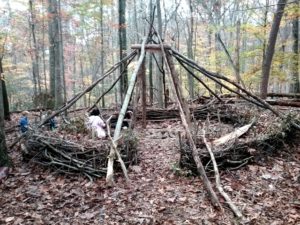 Building shelter can also be a real ice-breaker for students who aren’t as comfortable in natural settings. Some kids are even squeamish about simply sitting in leaf litter or on the ground when they first find themselves in the great outdoors. Next thing you know, they’re having a blast working in teams to rake up giant piles of leaves (and jump into them), gather sticks and branches, and peel up dead bark in sheets. The trick is to take what would normally be a chore, and transform it into play. It can be a social activity where everyone collaborates, building up each other’s strengths and compensating for their weaknesses. Making a shelter really helps people get over any hang-ups and break down any barriers they see between themselves and the natural world, because before too long you’re covered with nature in the form of “dirt” and leaf duff, and, lo and behold, it’s fun. According to the hygeine hypothesis, getting all this crud on you is actually beneficial to your health and immune function, and missing out of the experience of slathering yourself in benign and beneficial symbionts (bacteria and other) can be detrimental.
Building shelter can also be a real ice-breaker for students who aren’t as comfortable in natural settings. Some kids are even squeamish about simply sitting in leaf litter or on the ground when they first find themselves in the great outdoors. Next thing you know, they’re having a blast working in teams to rake up giant piles of leaves (and jump into them), gather sticks and branches, and peel up dead bark in sheets. The trick is to take what would normally be a chore, and transform it into play. It can be a social activity where everyone collaborates, building up each other’s strengths and compensating for their weaknesses. Making a shelter really helps people get over any hang-ups and break down any barriers they see between themselves and the natural world, because before too long you’re covered with nature in the form of “dirt” and leaf duff, and, lo and behold, it’s fun. According to the hygeine hypothesis, getting all this crud on you is actually beneficial to your health and immune function, and missing out of the experience of slathering yourself in benign and beneficial symbionts (bacteria and other) can be detrimental.
